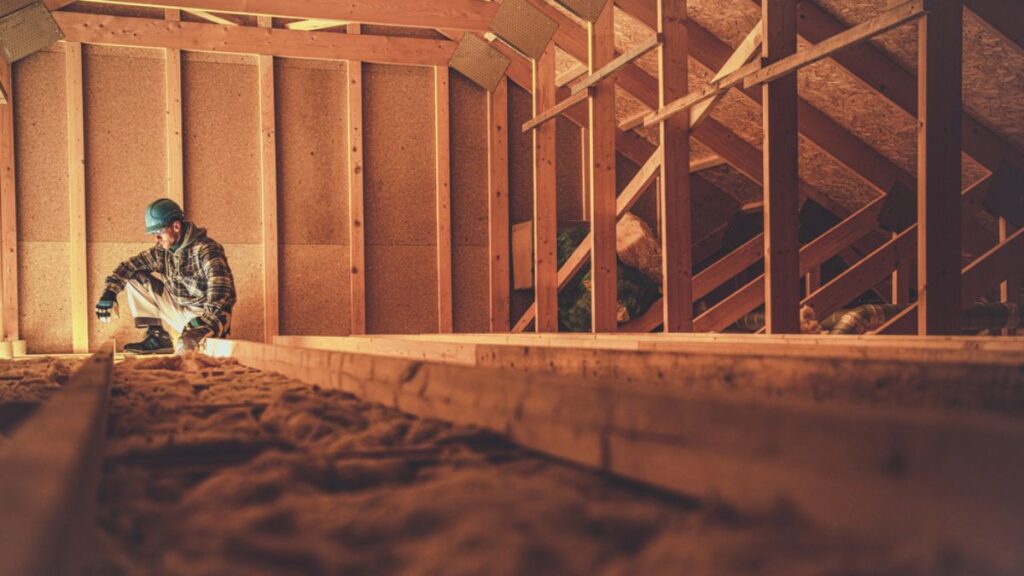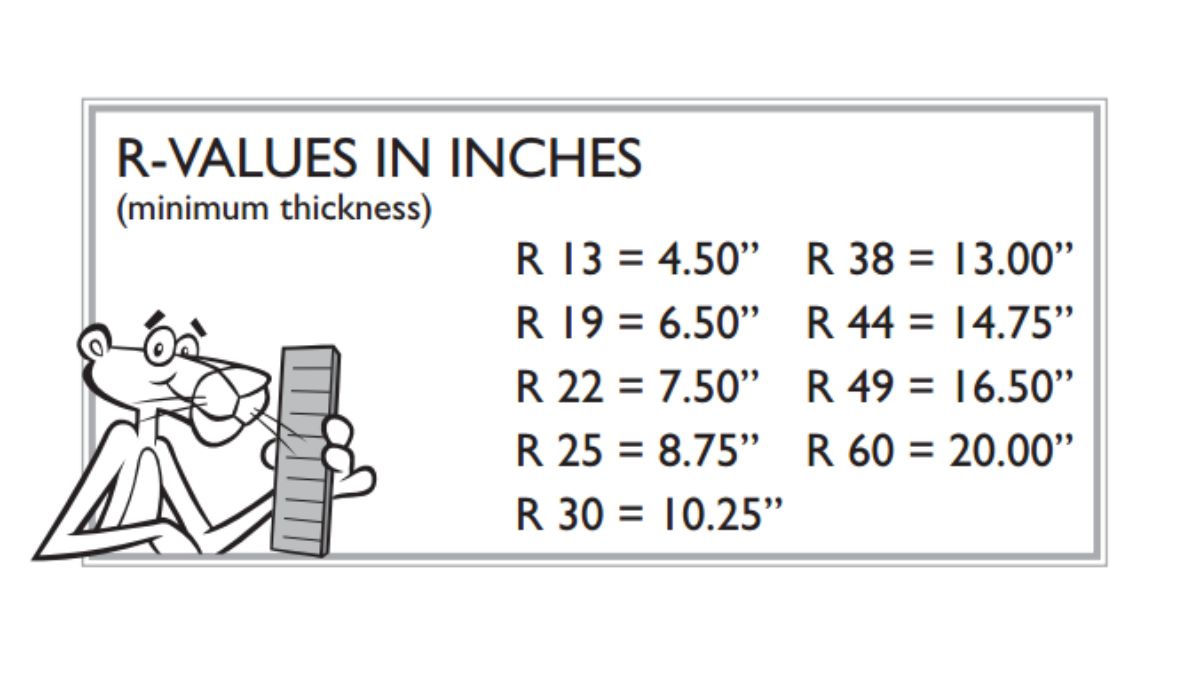Your home is like a living organism, with every part contributing to its health and functionality. Your attic, often overlooked, is no exception. It’s a key player in your home’s overall energy efficiency, structural integrity, and indoor air quality.
When you neglect your attic, you’re turning a blind eye to potential problems. These issues can range from minor inconveniences to major structural damages that could cost you a fortune in repairs. That’s where the importance of an attic inspection comes into play.
So, what do inspectors look for in the attic? Home inspectors assess the attic’s insulation and ventilation, structural damages, moisture and mold problems, and electrical safety. The inspection process is divided into 3 stages: pre-inspection preparations, during an inspection, and post-inspection report.
An attic inspection is not just a cursory glance at your attic space. A thorough examination plays a pivotal role in maintaining your home’s health. And the home inspector? They’re your invaluable partner, ensuring your home remains a safe and comfortable haven.

Who to Call for Attic Inspection?
For an attic inspection, you can contact several professionals depending on your specific needs:
- Home inspector: A licensed home inspector is trained to assess the overall condition of residential properties, including attics. They can identify potential issues, evaluate insulation, ventilation, and structural components, and provide a comprehensive inspection report.
- HVAC contractor: If you have concerns about the heating, ventilation, and air conditioning (HVAC) system in your attic, contacting an HVAC contractor can be beneficial. They inspect the attic space’s HVAC equipment, ductwork, and airflow.
- Insulation contractor: If your primary concern is the insulation in your attic, an insulation contractor specializes in evaluating insulation levels, identifying insulation gaps, and recommending suitable insulation materials and installation methods.
- Electrician: If you suspect electrical issues or need an assessment of electrical wiring, fixtures, or connections in the attic, contacting a licensed electrician is recommended. They inspect the electrical components and ensure they meet safety standards.
It’s important to choose reputable professionals with relevant expertise and proper licensing. Consider getting multiple quotes or recommendations, and inquire about their experience and qualifications before deciding.
The Anatomy of an Attic Inspection: What Do Inspectors Look For in the Attic
We’ll delve into the intricacies of an attic inspection and shed light on what a professional home inspector specifically focuses on.
From insulation and ventilation to structural integrity and signs of pests or water damage, discover the key elements inspectors scrutinize in the attic to ensure your home remains safe and secure.
Insulation: The Protective Blanket of Your Home
When an inspector ventures into your attic, one of the first things they assess is the insulation, your home’s protective blanket. Proper insulation plays a crucial role in maintaining a comfortable indoor temperature.
Types of Attic Insulation
There are various types of attic insulation, each with its unique properties:
- Fiberglass Insulation: Affordable and effective, this insulation is made from tiny glass fibers.
- Cellulose Insulation: An eco-friendly option made from recycled paper products.
- Spray Foam Insulation: Expands to fill gaps, making it excellent for sealing leaks.
Inspectors ensure it’s properly installed, looking for gaps, uneven distribution, and compression. They also assess the insulation level, which directly impacts its ability to resist heat flow, known as its R-value.

Ventilation: The Breath of Your Home
Next on the inspector’s attic inspection checklist is the proper ventilation of the attic. Your attic needs to breathe, exhaling hot, moist air and inhaling cool, dry air. Inspectors look at the types of attic vents installed:
- Soffit Vents: Located under the eaves, allowing fresh air to enter.
- Ridge Vents: Situated along the peak, letting hot air escape.
- Gable Vents: Installed in the gable ends, aiding in air circulation.
Poor ventilation signs
Some signs of poor ventilation include:
- An overheated attic in the summer
- Ice dams in the winter
- Damp insulation
- Mold growth
Structural Issues: The Backbone of Your Attic
Inspectors also look for structural issues in your attic. These include:
- Roof Leaks: Stains on the attic ceiling or insulation indicates a leaky roof.
- Damaged Joists or Rafters: Cracks or breaks in these structural elements compromise the attic’s stability.
- Pest Infestations: Signs of pests, like droppings or chewed wood, also indicate damage.
Moisture and Mold: The Silent Invaders
Moisture and mold are two silent invaders that can wreak havoc in your attic. Causes of moisture are roof leaks, poor ventilation, or condensation.
Moisture and Mold Signs
Signs of moisture and mold include:
- Damp insulation
- Water stains
- A musty odor
- Visible mold growth
These issues can lead to structural damage and pose health risks, especially for individuals with respiratory conditions.
Electrical and Fire Safety: The Guardians of Your Home
Inspectors check for electrical code compliance, ensuring the wiring is properly installed or there is no faulty wiring posing a fire risk. They also look for fire safety measures, like a clear path for escape in case of a fire.
Related reading: Common Safety Issues Found During Home Inspections
The Journey Through an Attic Inspection: From Preparation to Report
Embarking on an attic inspection might seem daunting, but don’t worry. We’re here to guide you through every step of the process. From pre-inspection preparations to the final report, here’s what you can expect.
Pre-Inspection Preparations: Setting the Stage
Before the inspector arrives, there are a few things to do to ensure a smooth inspection process. Clear any clutter from the attic entrance to provide easy access. If there are leaks or rodent infestations, make a note of them to discuss with a professional inspector.
The goal here is to create an environment that allows for a thorough and efficient inspection.
During the Inspection: The Main Event
As the inspector navigates through your attic, they will look for the insulation, ventilation, structural integrity, moisture, mold, and electrical and fire safety, assessing the condition of these elements and looking for any signs of damage or potential issues.
The inspector will take photos, make notes, and measure moisture levels or insulation thickness. Don’t hesitate to ask questions during the inspection. This is your opportunity to gain insights into the health of your attic.
Post-Inspection Report: The Final Reveal
Once the inspection is complete, the inspector will compile their findings into a comprehensive report. This document will detail any issues found, often accompanied by photos and recommendations for repairs or improvements.
Take the time to review this report carefully. If there’s anything you don’t understand, reach out to the inspector for clarification. This report is not just a list of problems; it’s a roadmap guiding you on how to maintain a healthy, safe, and energy-efficient attic.

Attic Inspection Cost
Costs of attic inspection can vary depending on several factors, including location, the attic size, the inspection scope, and the service provider. Basic attic inspection costs range from $1 to $4 per square foot. A 1500 square foot attic can cost $1,500 to $6,000, with an average cost of $2,500.
The cost will vary by complexity and thickness. For example, an R30 insulation is 10 to 14 inches thick, while in northern climates, R60 insulation is 20 inches or more.

4 Important Attic Cost Considerations
Here are 4 important factors to consider:
- Location: Costs may differ based on geographical location. Prices can vary between urban and rural areas or regions within the same country.
- Size and Complexity of the Attic: Larger attics or attics with complex layouts, multiple levels, or difficult access points may require more time and effort to inspect thoroughly. As a result, the inspection cost may be higher for such attics.
- Scope of the Inspection: The scope of the attic inspection can vary depending on the specific needs and concerns of the homeowner. A basic inspection typically covers evaluating insulation levels, ventilation, signs of water damage, pests, and structural integrity. However, additional services such as HVAC system evaluation, electrical inspection, or mold testing may incur extra costs.
- Service Provider: The rates of service providers can vary based on their level of expertise, qualifications, reputation, and location. Established home inspection companies or specialized contractors may charge higher rates compared to individual inspectors or lesser-known professionals.
If additional services or specialized inspections, such as HVAC or electrical evaluations, are required, the cost is higher. It is recommended to contact local service providers, obtain multiple quotes, and inquire about the specific services included in their inspection to get a more accurate estimate of the costs in your area.
It’s worth noting that while cost is an important factor, it shouldn’t be the sole determining factor. It’s equally important to consider the service provider’s experience, qualifications, and reputation to ensure a thorough and reliable attic inspection.
Tip
Clarify what services are included in the cost estimate to avoid any surprises later on. Read the customer reviews, ask for references, and check the credentials of the service provider to make an informed decision about hiring an attic inspection professional.
What Do Inspectors Look For in the Attic FAQs
Navigating the world of attic inspections can be filled with questions. Here, we address some of the most common queries to help you understand the process better.
What is the best way to insulate an attic?
The best way to insulate an attic depends on climate and budget. Common methods include fiberglass batts, blown-in insulation, or spray foam insulation with radiant barriers.
Is it safe to walk in an attic?
Walking in an attic can be safe if certain precautions are taken. Ensure the attic floor is sturdy and capable of supporting your weight, use proper footwear, avoid stepping on insulation, watch out for hazards like exposed wires or sharp objects, and ensure sufficient lighting.
What is the importance of an attic inspection?
Think of an attic inspection as a health check-up for your home. It uncovers hidden issues, from insulation gaps and poor ventilation to structural damage and mold growth. By identifying these problems early, you can address them before they escalate into costly repairs.
How often should an attic be inspected?
While there’s no hard and fast rule, having your attic inspected once a year is generally recommended. If you notice a sudden increase in energy bills or visible water stains, schedule an inspection immediately.
What are the common problems found in attics?
Common issues found in attics include inadequate or damaged insulation, poor ventilation, roof leaks, structural damage, and pest infestations. Other issues include mold growth due to excess moisture and electrical problems that could pose a fire risk.
Can homeowners perform their own attic inspections?
It is not recommended to do an attic inspection on your own. Home inspectors are trained to spot issues and tools to perform a more thorough inspection, assessing everything from insulation levels to structural integrity.
The Last Word
As we journey through attic inspections, one thing becomes crystal clear: these inspections are not just a good-to-have but a must-have. They’re the health check-ups your home needs to remain a safe, comfortable, and energy-efficient haven for you and your loved ones.
An attic inspection isn’t a one-and-done deal. It’s a commitment to regular check-ups, catching potential issues before they become major problems. It’s about being proactive, not reactive, regarding your home’s health.
So, don’t wait for a problem to prompt an inspection. Schedule regular attic inspections as part of your home maintenance routine. It’s a small step that can make a big difference, helping you protect your investment and enjoy peace of mind.







